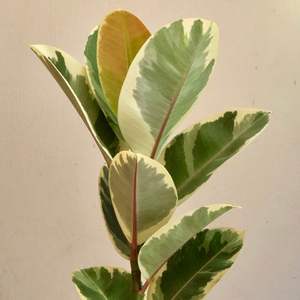Plant Experience
Detail
Rubber Plant Care
Temperature: Average room temperatures of 60 - 75°F (15 - 24°C are fine. Avoid lower than 55°F (12°C), sudden temperature drops and cold drafts.
Light: A nice brightly lit spot is ideal, without direct sunlight.
Watering: Water once the soil becomes slightly dry to the touch and make sure the pot has sufficient drainage holes to allow excess water to seep through. The worst thing you can do regarding watering is give it too much.
Soil: A well-draining and well-aerated potting soil is needed. 1 part peat, 1 part pine bark and 1 part coarse sand (or perlite) is a good mix.
Re-Potting: From May - June re-pot once the roots have become pot bound or every year when the plants are very young, and then once every 3 years after the plant has matured. I would renew the soil every year.
Fertilizer: Feed during spring and summer with a diluted liquid fertilizer every two weeks.
Humidity: Normal room humidity is fine. To improve humidity mist the leaves when it gets very warm in the summer.
Propagation: These can be quite tricky to propagate by stem tip cuttings, but you can succeed. Take a cutting (few inches long) and allow the sap to dry for 1 hour. Before potting the cutting in soil use rooting hormone and then provide the bottom of the pot some heat (usually using a heat pad). The temperature wants to be kept at around 70°F (21°C) - 75°F (24°C) ideally.
Pruning: Once the rubber plant has grown to the height you want it to grow up to, you can cut the top off. You may also want to prune back any unwanted branches to give the plant a fuller shape. It's best to prune in spring or summer but any other time will be fine.
Cleaning: Your plants leaves will appreciate being cleaned gently with tepid water and you will enjoy the glossy clean dust free look. Use a very soft cloth or sponge.
Potential Problems
Loss of leaves: Most common cause is over-watering, which will need attention asap (renew top soil or re-pot --pot up--). Other conditions can also cause leaves to drop including, low temperatures, not enough light or cold drafts. Moving your plant from a bright location to dim can also cause leaf drop. It's normal for some of the bottom leaves to turn yellow and drop, but do check if conditions are OK.
Leaf edges yellowing: This is really a process of elimination. The problem could be poor soil, under-feeding, or too much water. You'll need to check each one of the care instructions above and eliminate what your doing well and try to find the cause.
Pests: Mealy bug, scale and mites are common pests that like to cause this ficus tree problems.
Temperature: Average room temperatures of 60 - 75°F (15 - 24°C are fine. Avoid lower than 55°F (12°C), sudden temperature drops and cold drafts.
Light: A nice brightly lit spot is ideal, without direct sunlight.
Watering: Water once the soil becomes slightly dry to the touch and make sure the pot has sufficient drainage holes to allow excess water to seep through. The worst thing you can do regarding watering is give it too much.
Soil: A well-draining and well-aerated potting soil is needed. 1 part peat, 1 part pine bark and 1 part coarse sand (or perlite) is a good mix.
Re-Potting: From May - June re-pot once the roots have become pot bound or every year when the plants are very young, and then once every 3 years after the plant has matured. I would renew the soil every year.
Fertilizer: Feed during spring and summer with a diluted liquid fertilizer every two weeks.
Humidity: Normal room humidity is fine. To improve humidity mist the leaves when it gets very warm in the summer.
Propagation: These can be quite tricky to propagate by stem tip cuttings, but you can succeed. Take a cutting (few inches long) and allow the sap to dry for 1 hour. Before potting the cutting in soil use rooting hormone and then provide the bottom of the pot some heat (usually using a heat pad). The temperature wants to be kept at around 70°F (21°C) - 75°F (24°C) ideally.
Pruning: Once the rubber plant has grown to the height you want it to grow up to, you can cut the top off. You may also want to prune back any unwanted branches to give the plant a fuller shape. It's best to prune in spring or summer but any other time will be fine.
Cleaning: Your plants leaves will appreciate being cleaned gently with tepid water and you will enjoy the glossy clean dust free look. Use a very soft cloth or sponge.
Potential Problems
Loss of leaves: Most common cause is over-watering, which will need attention asap (renew top soil or re-pot --pot up--). Other conditions can also cause leaves to drop including, low temperatures, not enough light or cold drafts. Moving your plant from a bright location to dim can also cause leaf drop. It's normal for some of the bottom leaves to turn yellow and drop, but do check if conditions are OK.
Leaf edges yellowing: This is really a process of elimination. The problem could be poor soil, under-feeding, or too much water. You'll need to check each one of the care instructions above and eliminate what your doing well and try to find the cause.
Pests: Mealy bug, scale and mites are common pests that like to cause this ficus tree problems.
Album (12)
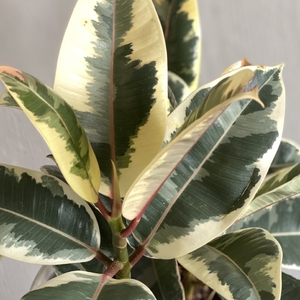
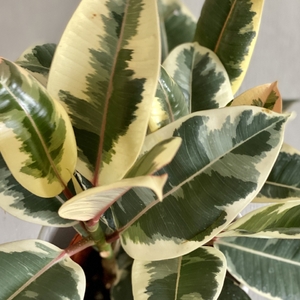
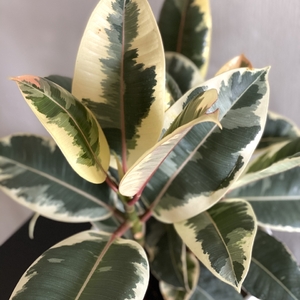
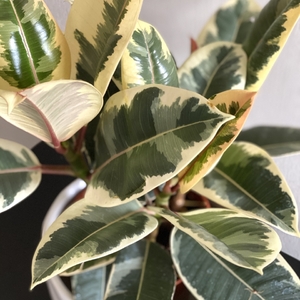
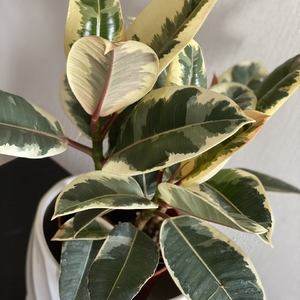
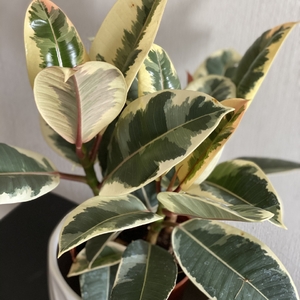
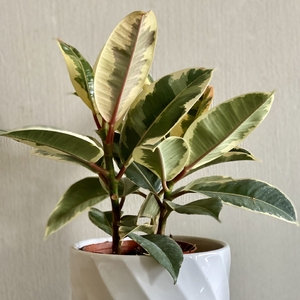
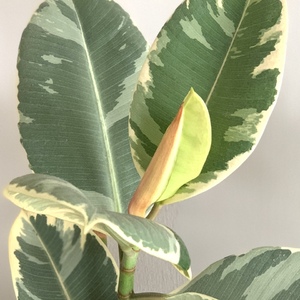
kensong
2020-08-31

New purchase. Pesaka Indah Ria RM17














kensong
2019-05-08

New leaf!


kensong
2018-11-18

This is a very slow grower. A new leaf finally emerged.
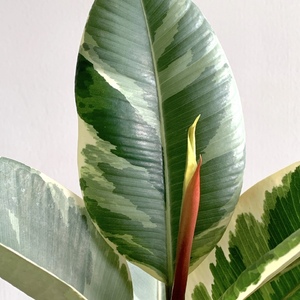

kensong
2018-06-15

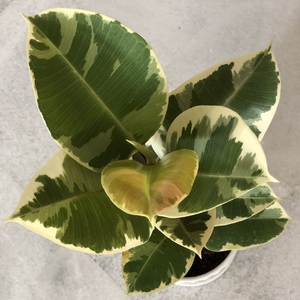
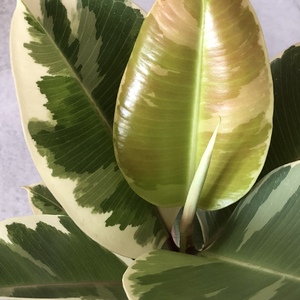
kensong
2018-06-15

This is my first growing diary.


Elite Article


